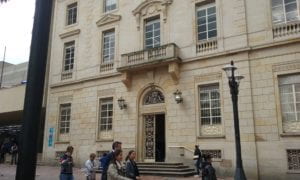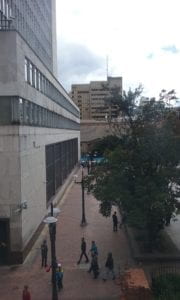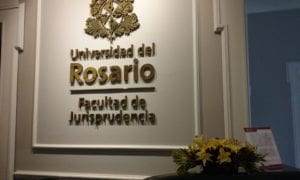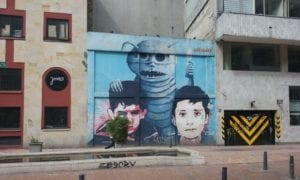Liza Martinez
Environment and Human Rights Research Group, Universidad del Rosario
Bogotá, Colombia
In Colombia, there is a saying that goes, “money is an illusion,” but is it? Gold is a natural resource in Colombia, and deposits are widely dispersed throughout the territory. Gold extraction was practiced in the country long before Spanish colonization in the fifteenth century. Indigenous people such as the Muiscas used gold to make pendants and ornaments for the tribe’s cacique (leader). Traditional gold mining is still practiced in many small communities. It is part of the culture but it is also a source of income. Yet, the government has made few efforts to organize the gold industry for these communities’ economic and social development.
The coffee industry, on the other hand, became organized in the early twentieth century. It brought development to those regions with governmental support, but the government kept gold mining in the “informal” sector. Miners did not receive training on better practices, nor did the industry receive investments for technification or improvement. This meant that artisanal and small-scale gold miners remained low-income, living in less developed towns.
Gold mining managed to survive even as the main economic activities, even today, have centered on agriculture and cattle rearing. But starting in 2003, the price of gold increased exponentially on the international market. In 2003, one ounce of gold cost $400. The cost for the same amount in 2017 is around $1200. This changed many things in the gold mining industry in small towns.
Santander de Quilichao, the small village I visited last month, is one such community. In Santander, as the locals call it, I met some of the community council leaders of African descent. They told me how many farmers and low-income people living in rural areas of the town have sold their land to people from other regions.
These people arrived specifically to practice gold mining. Many of them came from areas where people exist at the margins of the law, such as where paramilitary and guerilla groups are still present. Paramilitary and guerilla groups, I was told, have shifted from the illegal drug market to the legal gold market in the past decade to finance their activities.
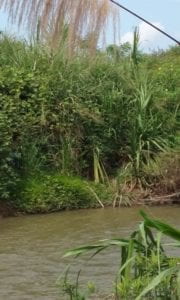
In this complicated landscape, the use of mercury in the gold amalgamation process becomes a health threat not only for miners and the local villagers, but even for those at the margins of the law. The water gets contaminated with mercury, then the contaminated water is ingested by fish, and then the fish is ingested by the communities. We visited one of the river banks where there are illegal mines and saw how the water, once clear (according to the community leader), now looks muddy with a dark brown tint.
The community leaders said that a few weeks before our visit, many fish were found dead there, but the local villagers took the fish home and cooked it, even though they knew it very likely died from mercury “overdose.”
As I approach the end of my fellowship, I have learned a lot about gold mining, mercury’s effects on human health, the national health system, and the approaches the national government has taken in regards to the right to health in Colombia. I have also learned how the efforts made within academia really make a difference and are necessary for the protection and fulfillment of human rights.
This study project has given me a better understanding of the many layers to this issue and has sparked my willingness to work towards finding lasting solutions for those communities.
I hope you’ve enjoyed my entries, and I invite you to learn more about the difficulties that artisanal and small-scale gold miners are facing in Colombia. And please, I ask you to advocate for the right to health!
